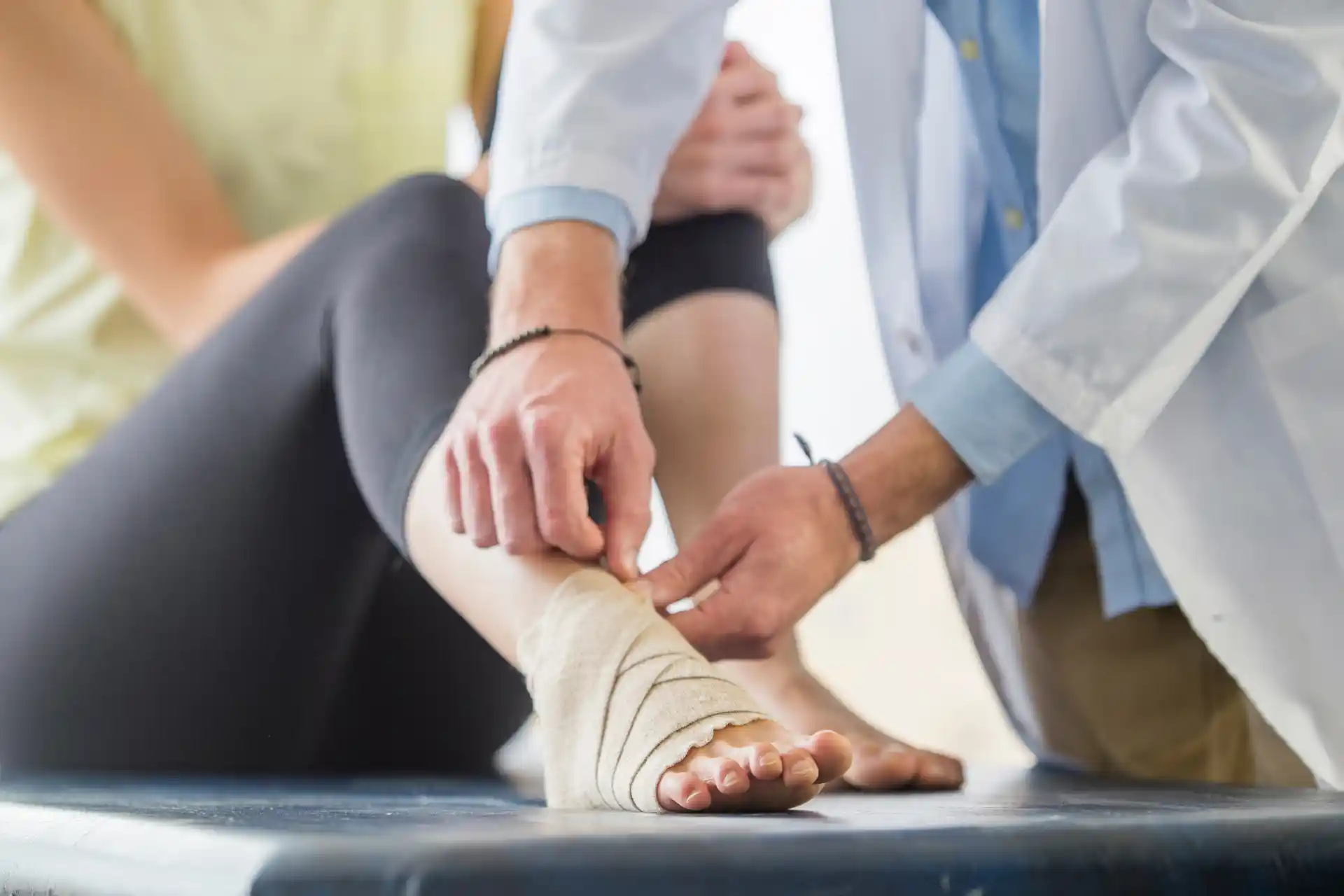Understanding Shoulder Pain
Causes of Shoulder Pain When Lifting Arm
Shoulder pain when lifting your arm can stem from various factors, including injuries and conditions affecting the muscles, tendons, and other structures in the shoulder.
Knowing the common causes can help in identifying the problem and seeking appropriate treatment.
- Rotator Cuff Injuries: The rotator cuff is a group of muscles and tendons that stabilize your shoulder. Injuries to this area are prevalent among athletes and can result in pain and weakness. Read more about rotator cuff injury.
- Shoulder Impingement: This occurs when the shoulder blades exert pressure on the underlying soft tissues when lifting the arm. It can cause inflammation and pain. Learn more about shoulder impingement exercises.
- Tendinitis: Inflammation of the tendons, commonly the rotator cuff or biceps tendons, can cause pain when lifting your arm. Check out our article on rotator cuff tendinitis.
- Labral Tears: Tears in the cartilage surrounding the shoulder socket, known as the labrum, can cause pain and instability. More information can be found at labral tear.
- Bursitis: Inflammation of the bursa, small fluid-filled sacs within the shoulder, can also lead to pain when lifting your arm. See more on shoulder bursitis.
Common Symptoms to Look Out For
Understanding the symptoms associated with shoulder pain can help you identify the specific issue and seek timely intervention. The following symptoms are commonly associated with shoulder pain when lifting your arm:
These symptoms can vary in intensity based on the underlying condition and severity of the injury.
If you experience persistent pain or other concerning symptoms, it is advisable to seek professional help.
Understanding the causes and symptoms of shoulder pain when lifting your arm can play a crucial role in early diagnosis and effective treatment, preventing further complications and promoting recovery.
For more on assessing shoulder injuries, consider reading about the empty can test and the Hawkins Kennedy test.
Explore our articles on related conditions that may cause shoulder pain such as adhesive capsulitis, shoulder strain, and shoulder tendinopathy.
Treating Shoulder Pain
These treatment options should be treated as a general guideline, always consult with a healthcare professional for personalized guidance on shoulder pain treatment that is right for you.
Rest and Ice Therapy
Rest and ice therapy are fundamental steps in managing shoulder pain, especially when lifting the arm. Limiting activities that provoke the pain and ensuring adequate rest can help reduce inflammation and prevent further aggravation of the injury.
Applying ice packs to the affected area for 15 to 20 minutes several times a day can help minimize swelling and provide pain relief.
Physical Therapy Exercises for Strengthening
Physical therapy exercises are vital for strengthening the shoulder muscles and promoting recovery. These exercises focus on enhancing the stability and mobility of the shoulder joint.
Always consult a healthcare professional before performing these exercises to avoid further injury.
Some effective exercises include:
- Pendulum Swings: Lean forward and let your arm hang down. Gently swing your arm in small circles.
- Wall Crawls: Face a wall and slowly walk your fingers up the wall as high as possible without pain.
- External Rotations: Use a resistance band. Keep your elbow at a 90-degree angle and rotate your arm outward.
For more detailed guidance on physical therapy exercises, refer to our article on rotator cuff exercises.
Pain Management Techniques
Managing shoulder pain effectively can significantly enhance your recovery process. Pain management techniques may include:
- Over-the-counter Pain Relievers: These can help alleviate pain and reduce inflammation.
- Heat Therapy: Applying heat before activities can increase blood flow and relax muscles.
- Massage: Gentle massage around the shoulder area can help relieve muscle tension.
- Stretching: Regular stretching exercises can improve flexibility and prevent stiffness.
In certain cases, more advanced forms of pain management might be necessary.
If pain persists, it might be beneficial to explore options such as corticosteroid injections or see a professional for further evaluation.
Understanding the appropriate treatment strategies can help you manage your shoulder pain and promote faster recovery.
Rehabilitating Shoulder Injuries
Importance of Proper Form and Technique
Proper form and technique are crucial in preventing further injury and ensuring effective rehabilitation of the rotator cuff.
When performing exercises, always focus on maintaining good posture and alignment. Incorrect form can lead to additional strain on the shoulder, exacerbating the pain.
Key Tips for Maintaining Proper Form:
- Keep your shoulders down and back.
- Avoid arching your lower back.
- Engage your core for stability.
- Perform exercises slowly and controlled.
Gradual Progression in Return to Activity
Gradual progression is essential when returning to activities after a rotator cuff injury. Rushing the process can lead to setbacks and prolong the recovery period.
Start with low-impact exercises and slowly increase the intensity and duration as your shoulder becomes stronger.
Example Progression Plan:
These stages ensure the shoulder muscles are adequately conditioned before engaging in more demanding activities.
When to Seek Professional Help
While many rotator cuff injuries can be managed with home treatment and exercises, there are times when professional intervention is necessary.
If you experience severe pain, decreased range of motion, or any of the other symptoms below, it's advisable to consult a healthcare provider:
- Persistent pain despite rest and home treatment
- Weakness in shoulder
- Inability to lift your arm
- Signs of infection, such as redness or swelling
- Noticeable deformity in the shoulder
A healthcare professional can perform specific tests to diagnose the extent of your injury. They might recommend physical therapy for shoulder pain or other interventions based on their findings.
Seek RELIEF®
RELIEF® is a science-backed, targeted approach that targets dysfunctional fascia that surrounds the affected shoulder joint and rotator cuff.
The treatment utilizes hydrodissection—a fluid-based technique that gently separates and releases adhered soft tissue layers and fascia, which may contribute to shoulder pain and joint instability.1,2,3,4,5,6,7
RELIEF® is a minimally invasive alternative to traditional treatments—and requires no steroids, medication, surgery, anesthesia, or post-procedure immobilization.
Preventing Future Shoulder Issues
To avoid future shoulder pain when lifting your arm, it is essential to incorporate appropriate preventive measures.
These include shoulder strengthening exercises, a proper warm-up and stretching routine, and being attuned to your body’s signals.
Shoulder Strengthening Exercises
Strengthening the muscles surrounding your shoulder can help prevent injuries like rotator cuff tendinitis and rotator cuff tears. Here are some effective exercises to include in your routine:
- External Rotation with Resistance Band: Strengthens the rotator cuff muscles.
- Internal Rotation with Resistance Band: Targets internal rotator muscles.
- Shoulder Blade Squeeze: Enhances scapular stability.
- Lateral Raises: Strengthens the deltoids.
- Prone T: Targets the posterior shoulder and upper back muscles.
Incorporate these exercises into your weekly routine to build strength and resilience in your shoulder muscles.
Proper Warm-up and Stretching Routine
A thorough warm-up and stretching routine can significantly reduce the risk of shoulder injuries. Here are key components to include:
- General Warm-up: Engage in 5-10 minutes of moderate-intensity cardio (e.g., jogging, cycling) to increase blood flow.
- Dynamic Stretching: Perform movements like arm circles and cross-body arm swings to dynamically stretch the shoulder muscles.
- Static Stretching: After your workout, incorporate static stretches such as the cross-body shoulder stretch and overhead tricep stretch to improve flexibility.
Adequate warm-up and stretching not only enhance flexibility but also prepare your muscles for physical activity, thus preventing strains and protecting against injuries like a torn rotator cuff.
Listening to Your Body's Signals
Being mindful of your body’s signals can prevent minor issues from escalating into severe injuries. Pay attention to signs such as:
- Discomfort or Pain: Any discomfort or pain during activities may indicate an underlying issue like rotator cuff pain.
- Weakness: Sudden weakness in the shoulder can be a symptom of a rotator cuff injury or shoulder instability.
- Reduced Range of Motion: Difficulty in moving your shoulder through its full range of motion might signal issues like a torn labrum or shoulder impingement.
If you experience persistent pain or any unusual symptoms, seek professional help to address the issue and prevent further complications.
For more insights on shoulder health, visit our article on physical therapy for shoulder pain.
Contact us today to schedule a consultation and learn more about how RELIEF® may help with your shoulder pain and rotator cuff dysfunction.
.webp)

.jpg)
.jpg)

%201%20(1).jpg)
.svg)